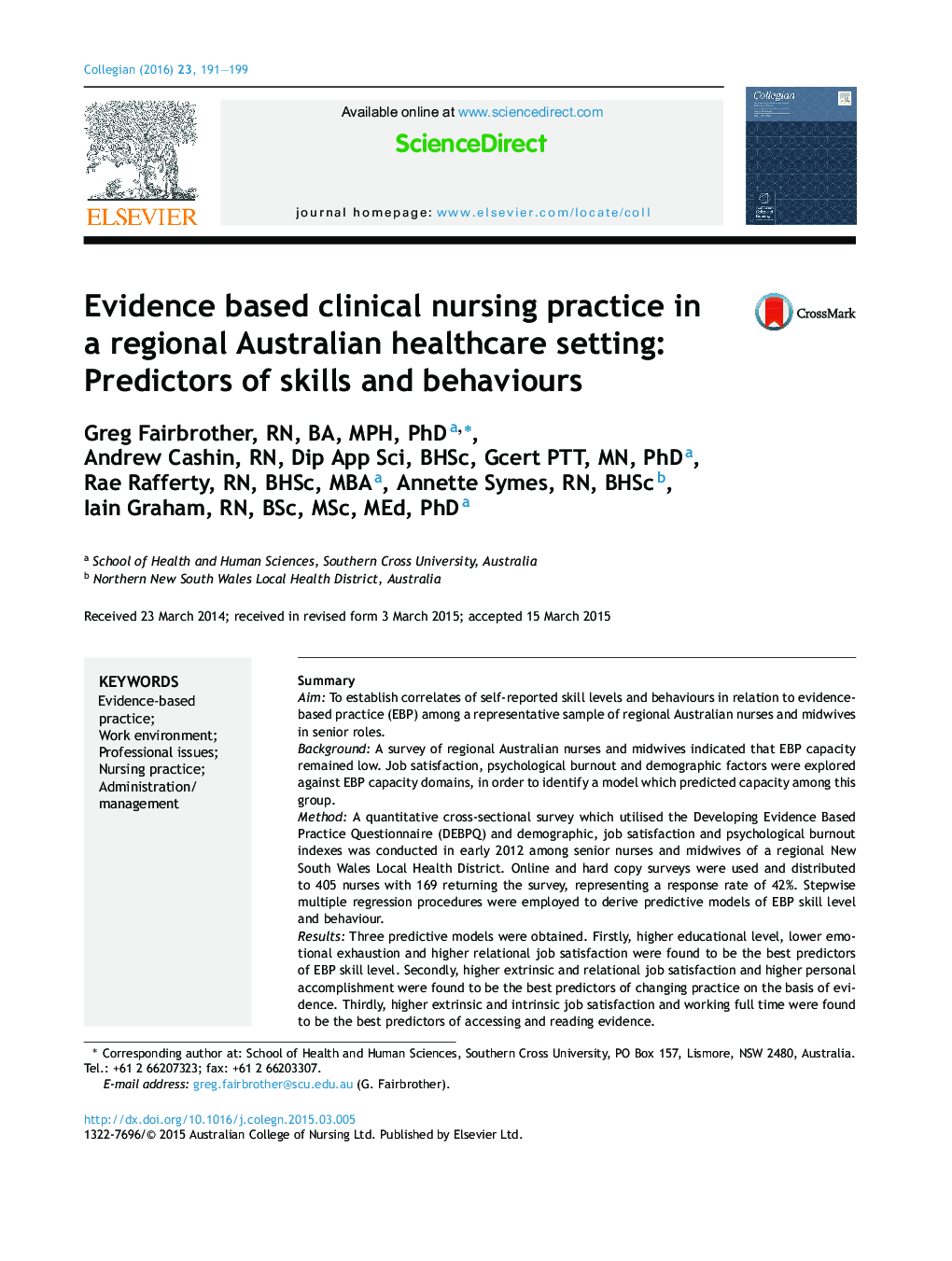| Article ID | Journal | Published Year | Pages | File Type |
|---|---|---|---|---|
| 2646073 | Collegian | 2016 | 9 Pages |
SummaryAimTo establish correlates of self-reported skill levels and behaviours in relation to evidence-based practice (EBP) among a representative sample of regional Australian nurses and midwives in senior roles.BackgroundA survey of regional Australian nurses and midwives indicated that EBP capacity remained low. Job satisfaction, psychological burnout and demographic factors were explored against EBP capacity domains, in order to identify a model which predicted capacity among this group.MethodA quantitative cross-sectional survey which utilised the Developing Evidence Based Practice Questionnaire (DEBPQ) and demographic, job satisfaction and psychological burnout indexes was conducted in early 2012 among senior nurses and midwives of a regional New South Wales Local Health District. Online and hard copy surveys were used and distributed to 405 nurses with 169 returning the survey, representing a response rate of 42%. Stepwise multiple regression procedures were employed to derive predictive models of EBP skill level and behaviour.ResultsThree predictive models were obtained. Firstly, higher educational level, lower emotional exhaustion and higher relational job satisfaction were found to be the best predictors of EBP skill level. Secondly, higher extrinsic and relational job satisfaction and higher personal accomplishment were found to be the best predictors of changing practice on the basis of evidence. Thirdly, higher extrinsic and intrinsic job satisfaction and working full time were found to be the best predictors of accessing and reading evidence.ConclusionEducation level and extrinsic job satisfaction are key correlates of EBP capacity in this regional Australian sample.Implications for practiceNursing workplace policy which promotes and supports the pursuit of post-graduate education and which promotes job satisfaction gain, is likely to result in EBP capacity-related gains among senior nurses and midwives.
